Want to know why Kyoto locals love their city after dark? While tourists head back to their hotels, the real magic unfolds. Secret food alleys come alive with sizzling yakitori smoke, ancient temples glow like paintings, and tiny bars hide behind sliding wooden doors. I’ve found the best things to do in Kyoto at night that most travel guides miss.
From slurping ramen in lantern-lit streets to watching geishas slip through moonlit alleys, this is your guide to the tastiest, coolest side of night-time Kyoto. Ready to eat your way through this stunning city?
- 👉 Pro Tip: I HIGHLY recommend this evening food tour through Kyoto’s Gion and Pontocho districts! They take you past the lines at hidden local bars and restaurants, plus access to three distinct sake tastings and authentic Japanese dishes. You also learn what makes Kyoto cuisine legendary from guides who know the real spots from tourist traps. This food tour is absolutely a must-do on a Kyoto itinerary in my opinion.

Best Things to Do in Kyoto at Night: 22 Kyoto Nighttime Activities
Are you ready to explore the most unique things to do in Kyoto at nighttime? As mentioned earlier, there’s a wide range of exciting activities in Kyoto after dark. Keep reading to find where to go in Kyoto at night.
Are you looking to experience traditional tea ceremonies and geisha performances? Or would you prefer to go to lively bars and explore contemporary art exhibitions? Whatever you’re planning to do once the sun sets, Kyoto can accommodate your needs. Here are all the best things to do in Kyoto at night that you should know about.
1. Walk through Gion district at night
The narrow cobblestone streets of Gion transform after dark into something straight out of a movie. I’ve spent countless evenings wandering these lantern-lit alleys, and there’s nothing quite like spotting a geisha hurrying to her appointment while traditional wooden buildings glow softly around you. The best part? It’s completely free to explore.
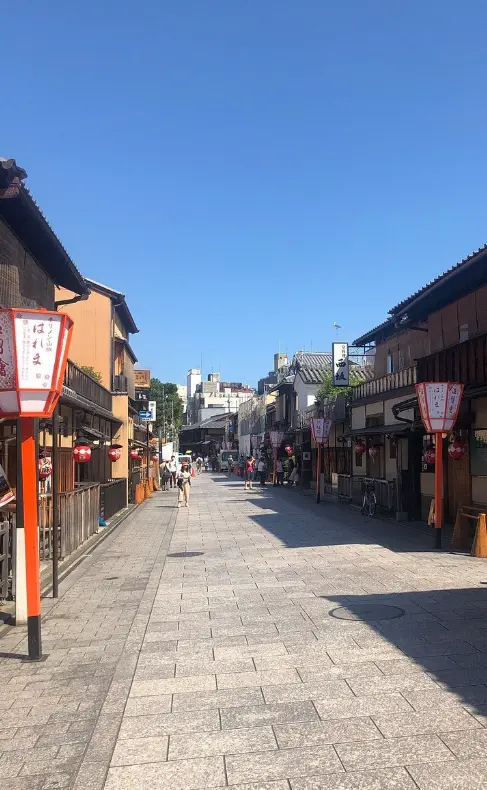
Gion night walking tours run from 7pm and cost around ¥2,000-3,000 for group tours, but honestly, you can explore independently and soak up the atmosphere at your own pace. The district comes alive around sunset when the teahouses light their paper lanterns and the evening crowd starts to emerge. Stick to the main streets like Hanami-koji and follow basic etiquette – no photos of geishas without permission and stay on designated public pathways.
Start at Yasaka Shrine and work your way through Shirakawa area where historic ochaya (tea houses) line the canal. The Ichiriki Chaya, Gion’s most famous teahouse, is particularly photogenic at night. Most restaurants and bars here stay open until 10pm or later, making it perfect for dinner after your temple visits.
- Read next: Surreal Experiences in Kyoto

2. Forge a ninja weapon in a metalworking workshop
Ever wanted to feel like a real ninja for a night? This hands-on workshop lets you craft your own weapon inside a traditional machiya studio in Kyoto. You’ll shape, heat, and polish steel using ancient tools, guided by sword masters whose families have practiced the art for generations. It’s part history lesson, part creative challenge, and all-around cool.
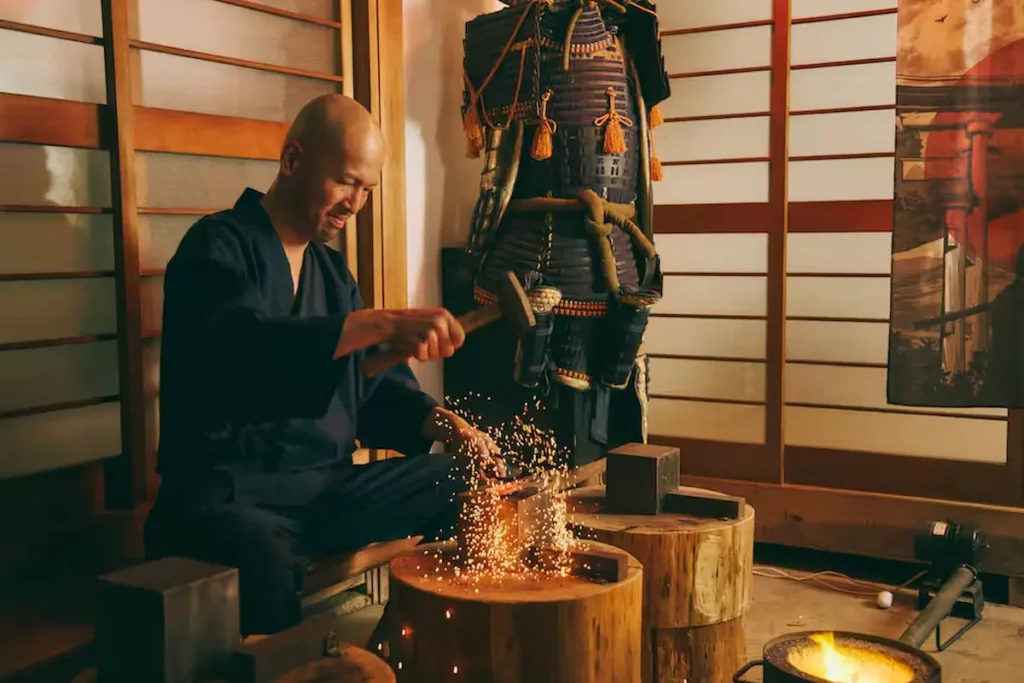
The vibe is friendly and energetic, and you’ll walk away with a handmade souvenir that feels straight out of a samurai film. I loved how patient the instructors were, explaining every detail in English while keeping things fun.
After your session, wander down to Pontocho Alley for late-night yakitori and sake. It’s the perfect way to balance all that ninja intensity with something delicious and local.
3. Hit Kyoto’s craft cocktail bars and speakeasies
Bee’s Knees is probably the coolest speakeasy in Kyoto – you’ll walk past it a dozen times before realizing the yellow door marked “The Book Store” is actually the entrance. Once inside, their Smoked Mojito comes with actual cherry blossom wood smoke, and honestly, it’s way more theatrical than you’d expect from a hidden bar. I tried their signature Bee’s Knees cocktail with gin and honey, and the bartenders really know what they’re doing.
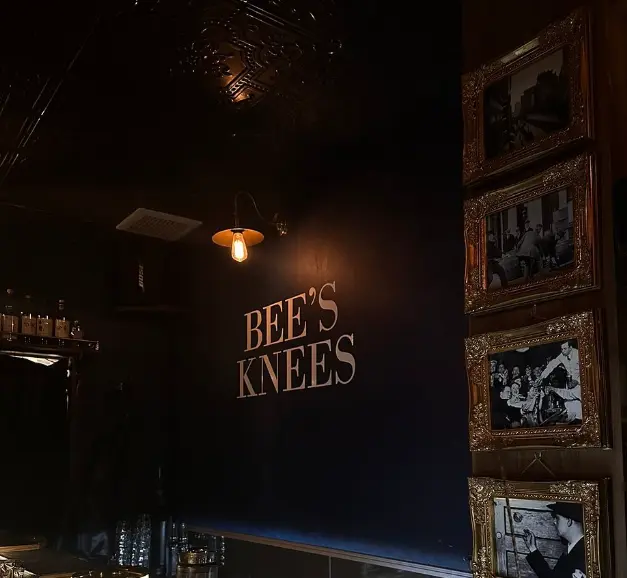
L’Escamoteur takes the mystery game even further with a trained magician on staff who’ll do sleight-of-hand tricks while mixing your drinks. It’s got this old apothecary vibe that’s pretty unique, even for Kyoto. Nokishita711 near Kiyamachi Street is more upscale and uses locally sourced ingredients – their seasonal cocktails change every few months, so there’s always something new to try.
Most speakeasies don’t take reservations for small groups, so you might wait, especially on weekends. Cocktails run about ¥1,500-2,500, and the whole point is the experience rather than getting drunk fast. I’d recommend starting your bar crawl early since these places fill up by 9pm. The staff at most spots speak decent English, which makes ordering way easier than you’d think.

4. Relax along the Kamo River after dark
Nothing beats grabbing a convenience store beer and settling onto the stone steps along the Kamo River for some serious people-watching. I discovered this local secret during my first week in Kyoto – it’s where everyone from college students to salary workers comes to decompress after long days.
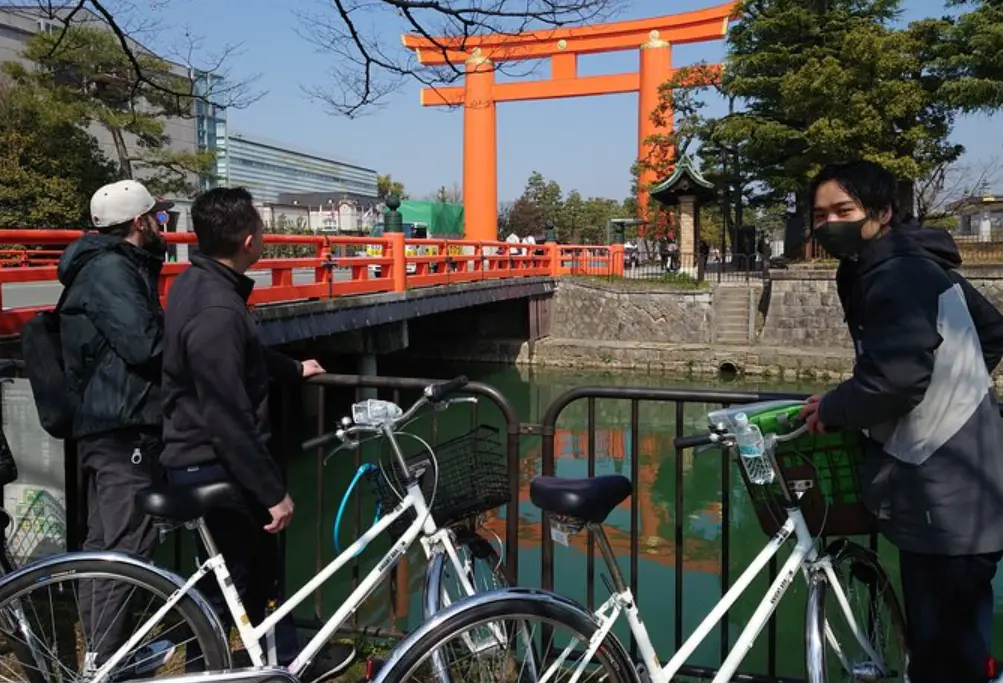
From May through September, restaurants set up “noryo yuka” platforms – elevated wooden decks extending over the river where you can dine with the sound of flowing water below. These riverside dining experiences run until late September and offer everything from casual izakayas to high-end kaiseki restaurants. Expect to pay ¥3,000-8,000 per person for dinner with a view.
The best free entertainment happens on the river banks themselves. Locals bring picnic blankets, play guitar, and enjoy impromptu gatherings that continue well into the evening. The walking paths are well-lit and safe, stretching for miles in both directions. Access is easiest from Gion-Shijo Station or Kawaramachi Station, and there’s no admission fee to enjoy one of Kyoto’s most relaxing nighttime activities.
- Read next: Best Places to Eat in Kyoto

5. Make ramen from scratch at a cooking class
The Ramen Factory in Kyoto is one of the smartest ways to spend an evening if you love food and hands-on experiences. You don’t just watch someone cook, you knead the noodles, mix the broth, and build your own bowl with toppings you pick yourself. The instructors are fun and knowledgeable, so you pick up tips and tricks that make your ramen taste amazing.
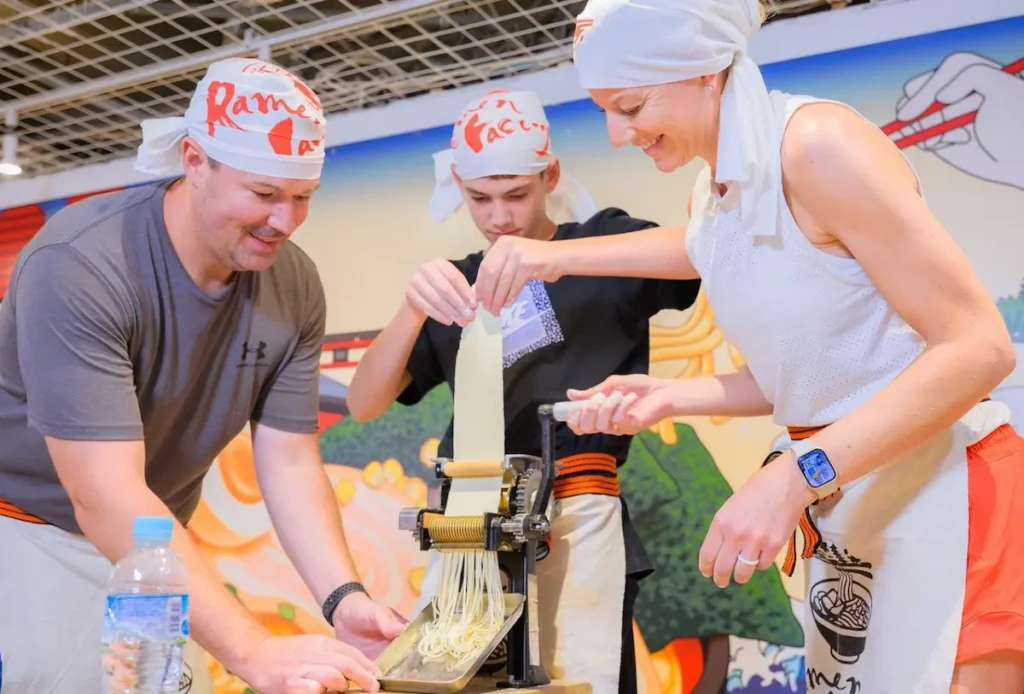
The class moves at a comfortable pace, giving you time to experiment and ask questions. By the end, you’re eating a bowl you made from scratch, which somehow tastes even better than anything you’ve had in restaurants.
Afterward, wander the streets of Kamigyo Ward or grab a matcha dessert nearby. Bring a camera to document your creation and leave room for seconds.
6. Belt out songs at karaoke
Jankara Kawaramachi and Big Echo are the go-to chains for karaoke in Kyoto, but honestly, the private room setup here is way better than what you’ll find back home. You get your own space with friends, proper sound systems, and nobody judging your terrible rendition of “Don’t Stop Believin’.” I’ve spent entire nights at Jankara – they’ve got English songs, decent food, and all-you-can-drink packages that actually make sense.
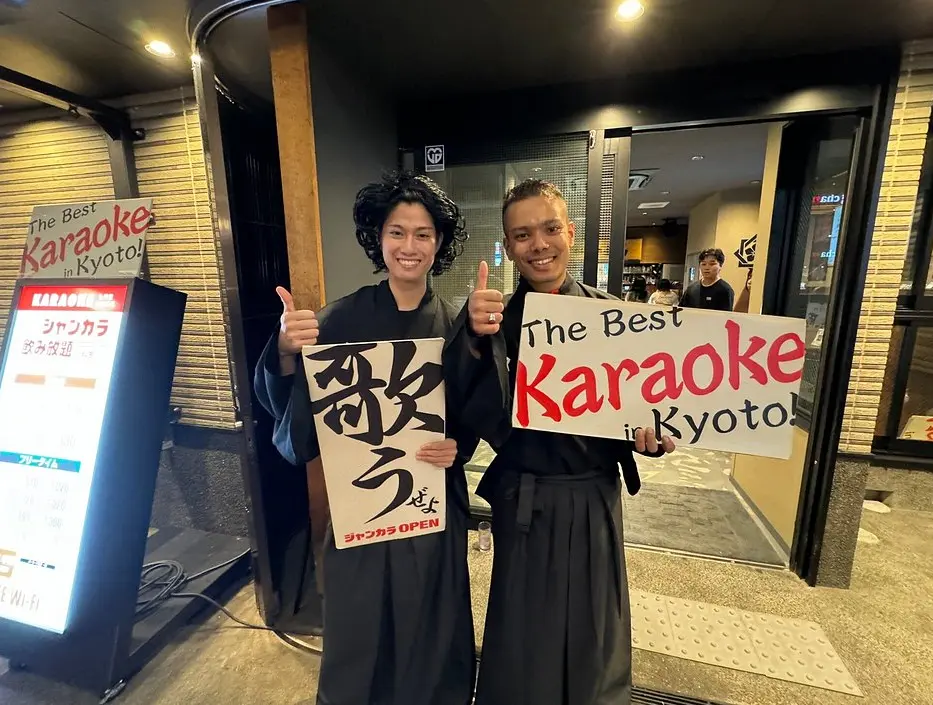
Doredoredo is completely different – it’s got this tiny stage where you sing in front of everyone instead of hiding in a private room. After a few drinks, it’s actually pretty fun watching locals belt out J-pop songs. The atmosphere gets pretty wild, especially on weekends when university students take over.
Most karaoke places charge around ¥600-800 per hour, but the all-you-can-drink deals for ¥1,200-1,500 are usually worth it. They’re open until 5am, so you can literally sing until sunrise if you want. Pro tip: midnight rates are often cheaper than evening prices, and the crowds thin out after 2am. You don’t need to speak Japanese to use the machines – most have English interfaces now.

7. Visit To-ji Temple for evening illumination
To-ji Temple becomes absolutely magical when lit up at night, especially during cherry blossom season when the famous five-story pagoda reflects in the temple pond. I still remember my first glimpse of that illuminated pagoda – it literally glows gold against the dark sky.
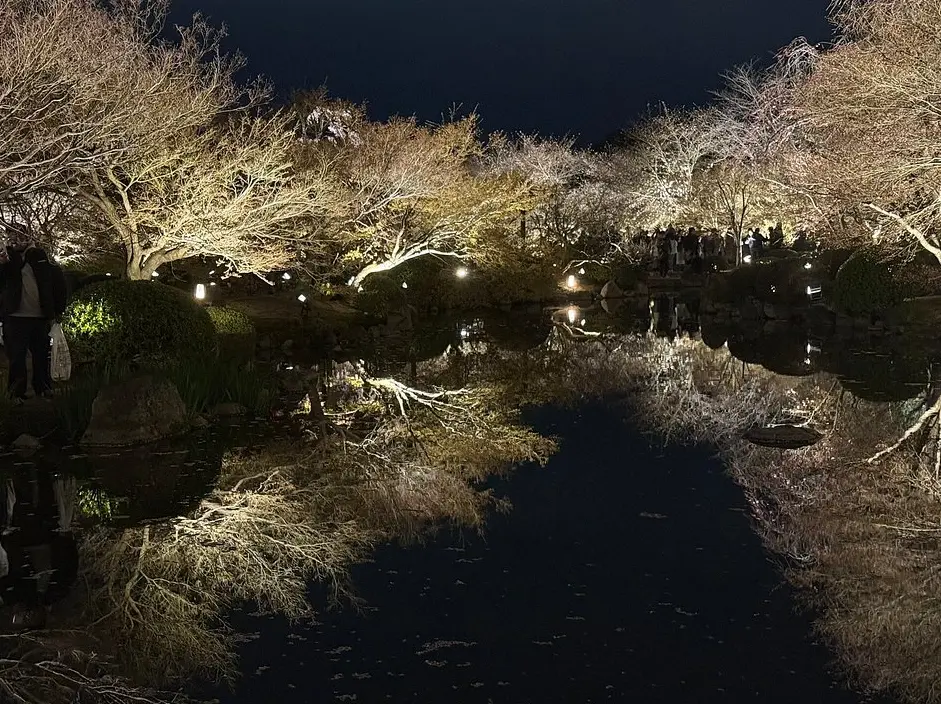
Spring illumination runs March 15-April 13, 2025, with night viewing from 6:00pm-9:30pm (last entry 9:00pm). Admission costs ¥1,000 for adults and ¥500 for children. Early admission tickets are available online for ¥1,800, allowing entry from 5:10pm-6:00pm before the crowds arrive. The autumn illumination typically runs November through early December with similar pricing.
The temple grounds feature Japan’s tallest wooden pagoda at 57 meters, plus beautiful gardens with a gourd-shaped pond surrounded by maple trees. During illumination events, the combination of the lit pagoda, surrounding cherry trees or autumn foliage, and reflections in the pond creates an almost surreal scene. The temple is just a 15-minute walk from Kyoto Station or 7 minutes from To-ji Station on the Kintetsu line.

8. Hear live shamisen music in a Kyoto townhouse
If you’ve never heard koto or shamisen played live, this intimate concert will stop you in your tracks. You can choose between two magical venues: a cozy Kyoto townhouse where you sit just feet from the musician, or a historic bathhouse where the tiled walls make every note shimmer. Each performance features classical and modern pieces explained in English so you understand the stories behind the sound.
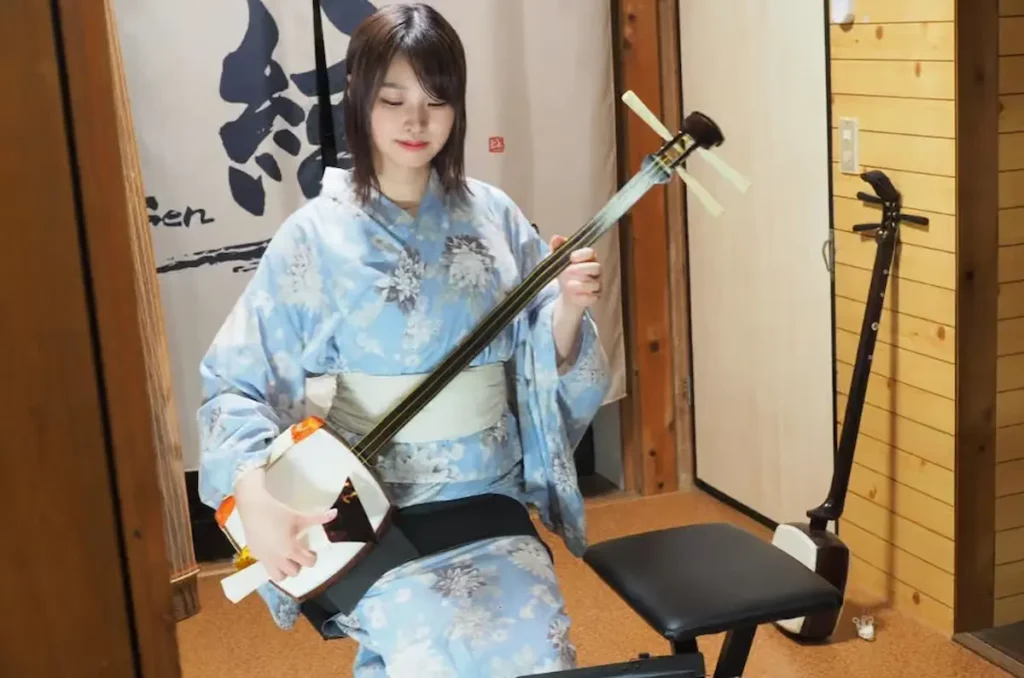
The musicians are masters of their craft, and the atmosphere feels personal, almost like a secret recital. I really enjoyed how they invite questions and even let you try the koto afterward. It makes the night feel special.
Before the show, wander through nearby Nishiki Market for street snacks or matcha sweets, then end the evening with the music still echoing in your mind.
9. Hit up Kyoto’s nightclubs
World Kyoto in Nakagyo Ward is hands down the best club in the city – they book international DJs regularly, and I’ve seen everyone from Steve Aoki to R3HAB perform there. The multi-level setup means you can escape to quieter areas when the main floor gets too intense. Cover charges run ¥2,000-5,000 depending on who’s playing, but it’s worth it for the sound system alone.
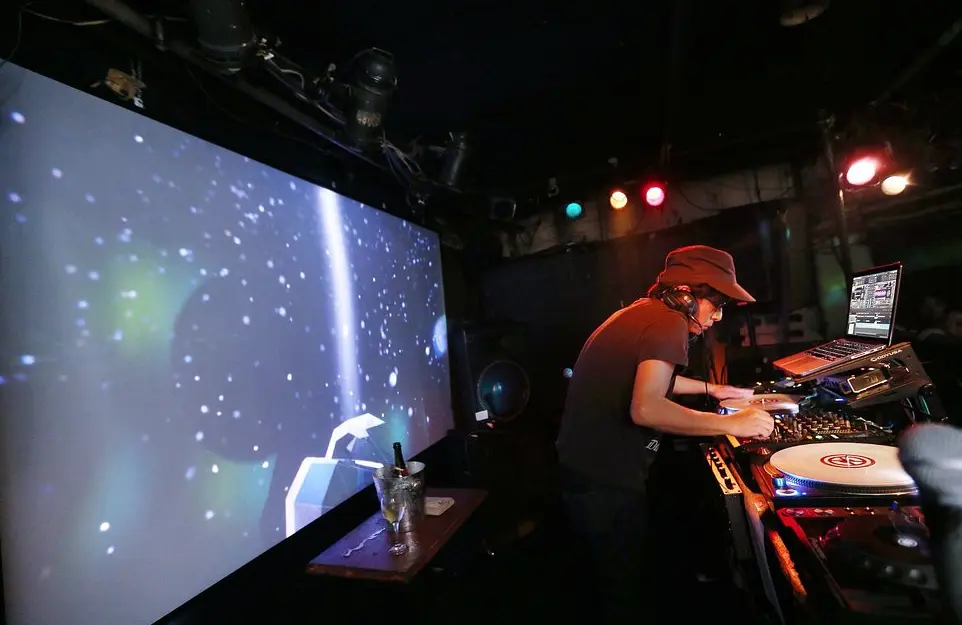
Club Metro has this underground alternative vibe that you won’t find anywhere else. It’s supposedly one of the oldest clubs in Japan, and they host everything from drag shows to live electronic performances. Chambers is huge and foreigner-friendly – they’ve got English, Portuguese, and Spanish-speaking staff, plus different rooms playing everything from EDM to old-school hip-hop.
Most clubs don’t really get going until after 10pm and stay open until 5am. If you’re into electronic music, Underbar-kyoto has great DJs and a more relaxed atmosphere where you can actually have conversations. Cover charges usually include one drink, and beers cost around ¥500-700. The dress codes aren’t too strict, but I’d avoid showing up in flip-flops and a tank top.
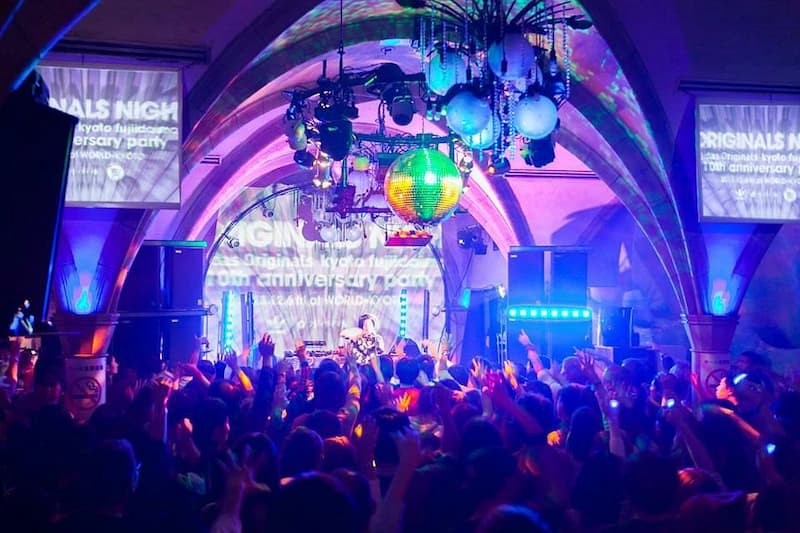
10. Stroll Kodaiji Temple gardens by night
Kodaiji Temple offers some of Kyoto’s most sophisticated evening illuminations, with carefully designed lighting that transforms the Zen gardens into an ethereal wonderland. The temple’s bamboo grove and rock garden look completely different under the soft artificial glow – I’ve visited during both day and night, and the nighttime experience is far more memorable.
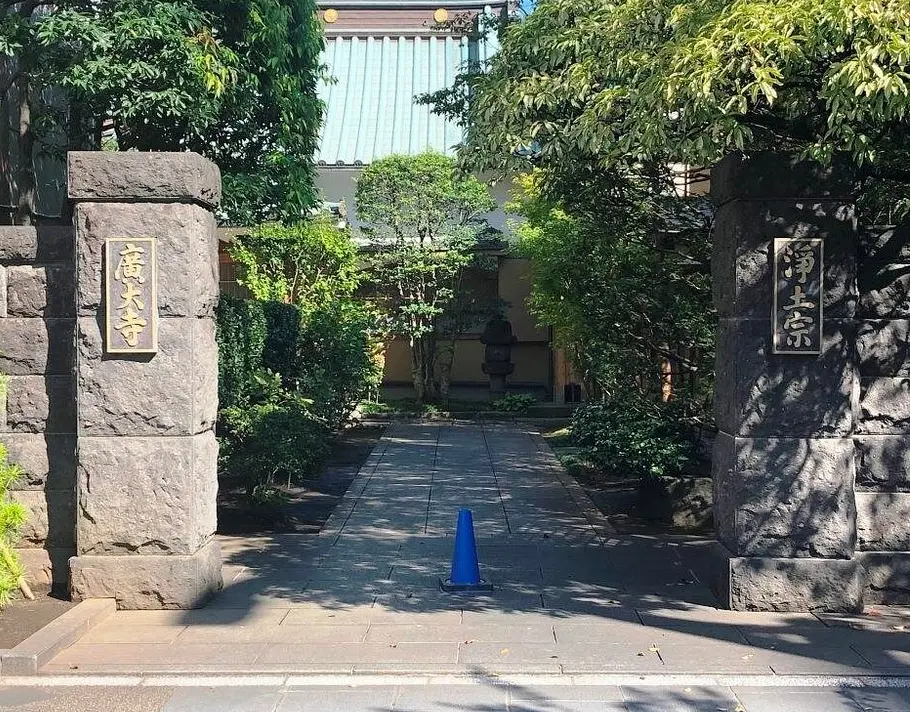
Evening illumination runs during spring (March 14-May 6, 2025), summer, and fall seasons from 5:00pm-9:30pm with last entry at 9:00pm. Admission costs ¥600. The temple currently features special art exhibitions including works by Italian artist Luca Galileo, commemorating the sister city relationship between Kyoto and Florence.
The illuminated walking paths guide you through different garden scenes, each with its own lighting design that changes at intervals. The rock garden’s colored illumination cycles through different hues, creating a meditative experience that’s quite different from typical temple visits. Located in Higashiyama, it’s about 10 minutes on foot from Keihan Gion-Shijo Station and makes an perfect addition to a Gion district evening walk.

11. Relax at late-night sento (public baths)
Sauna no Umeyu is open until 2am every night except Thursdays, making it perfect for unwinding after a long day of temple-hopping. This place has been around for over 100 years, and honestly, soaking in those hot baths after walking around Kyoto all day feels incredible. They’ve got medicinal baths, electric baths, and a proper sauna with cold plunge pools.
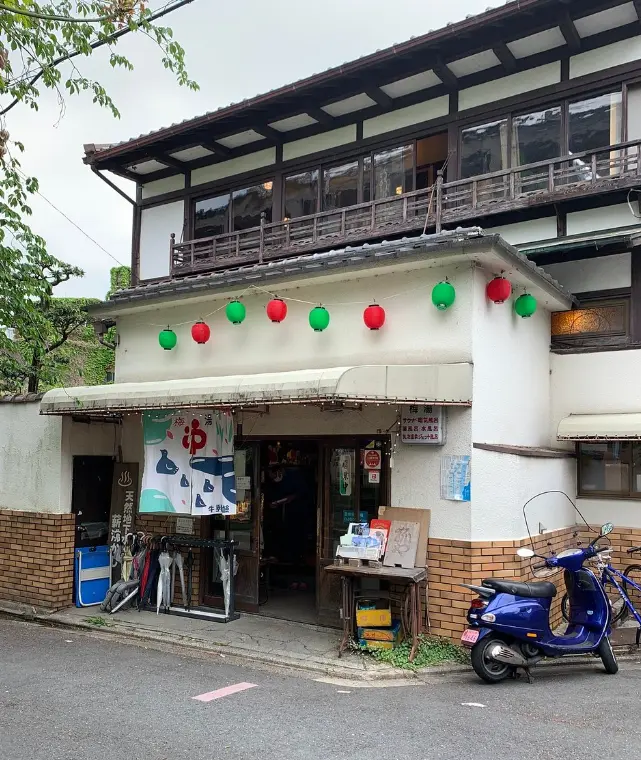
Funaoka Onsen in Kita Ward stays open until 1am and has this amazing retro atmosphere with green tiles and intricate ceiling carvings from the 1930s. It’s where locals have been coming for generations, and you can really feel the community vibe. Higashiyama-yu Onsen near Tanaka Monzen-cho also stays open past midnight and has natural underground water that’s way better than regular tap water.
Entry costs around ¥500-700, and most places provide soap and shampoo, though some charge extra for towel rentals. The etiquette is pretty straightforward – wash thoroughly before getting in the baths, don’t put your towel in the water, and keep your hair tied back. I always go around 11pm when it’s less crowded and more relaxing. These aren’t tourist attractions – they’re real community spaces where you’ll mostly see locals.
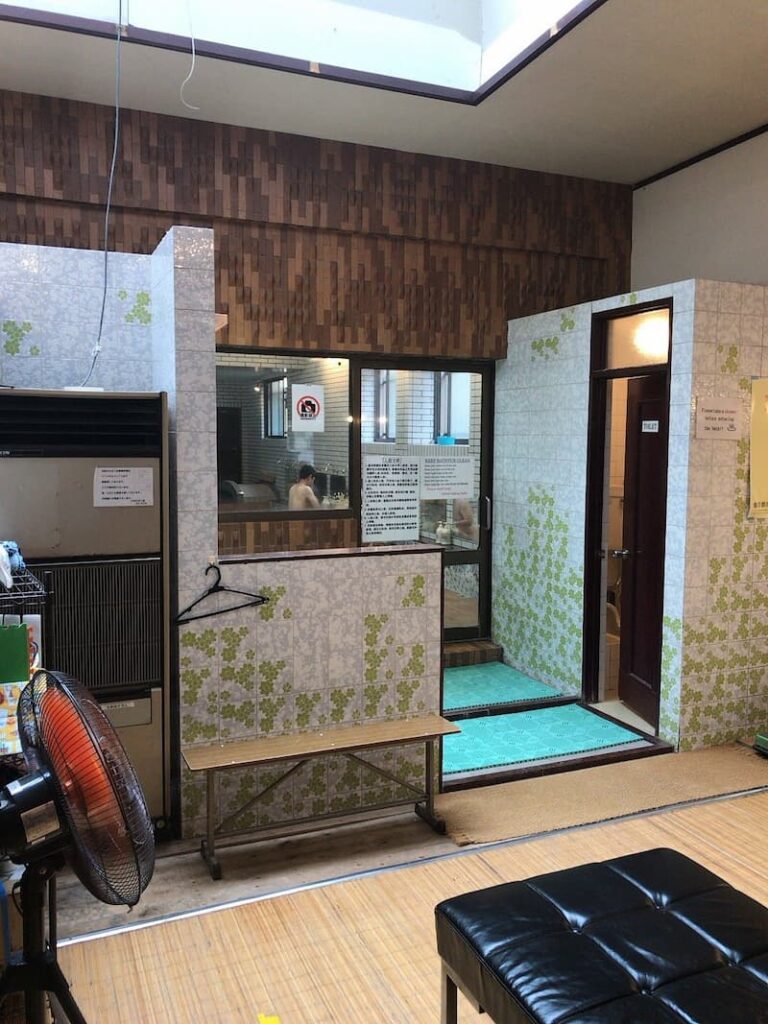
12. Explore Arashiyama Bamboo Grove after sunset
Walking through the Arashiyama Bamboo Grove at night feels like entering another world entirely. Without the daytime crowds, you can actually hear the wind rustling through thousands of bamboo stalks – a sound so distinctive it’s been designated one of Japan’s “100 Sounds Worth Preserving.”

The bamboo path is open 24 hours daily since it’s considered a public road, with no admission fee. However, lighting is very limited after dark, so bring a flashlight or use your phone’s light and walk carefully. Special illumination events occasionally happen during December’s Hanatouro festival, when 2,500 lanterns light up pathways throughout the area.
I recommend visiting just after sunset when there’s still some natural light filtering through the bamboo canopy. The grove connects several attractions including Nonomiya Shrine (which stays lit at night) and Tenryu-ji Temple’s north gate. The nearby Kimono Forest at Randen Arashiyama Station features illuminated textile pillars that create a magical complement to your bamboo grove visit. Access is easiest via Randen tram to Arashiyama Station (7-minute walk) or JR Saga-Arashiyama Station (13-minute walk).

13. Experience a private geisha dinner or performance
Booking a private geisha experience is actually way more accessible now than it used to be – economic changes have made these exclusive entertainments more open to international visitors. Maikoya offers authentic experiences where you’ll meet a maiko (apprentice geisha) for tea, traditional dancing, and conversation. I did their private tea ceremony package for around ¥30,000 per person, and honestly, watching the precise movements and learning about the traditions was fascinating.

AN Kyoto has dinner packages that include maiko performances, tea ceremonies, and even photo opportunities. The maiko I met taught us traditional Japanese drinking games and completely dominated us at every single one. These experiences typically last 2-3 hours and include explanations about geisha culture, traditional arts, and the years of training involved.
Prices range from ¥30,000-100,000 per person depending on what’s included – dinner, private settings, and longer interactions cost more. You’ll need to book well in advance, especially during cherry blossom season when everything fills up. Some high-end ryokans like Hiiragiya can arrange private meetings, but expect to pay premium prices. The interactions are respectful and educational, not weird or inappropriate like some people worry about.
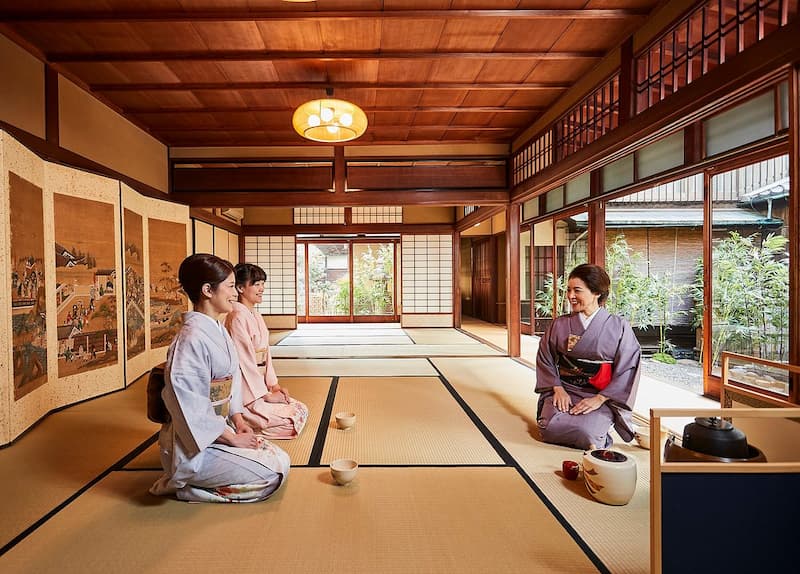
14. Enjoy Maruyama Park in the evening
Maruyama Park transforms into Kyoto’s most popular nighttime gathering spot, especially during cherry blossom season when the famous weeping cherry tree becomes the centerpiece of outdoor parties and hanami celebrations. I love how this place brings together locals and visitors in such a relaxed, welcoming atmosphere.
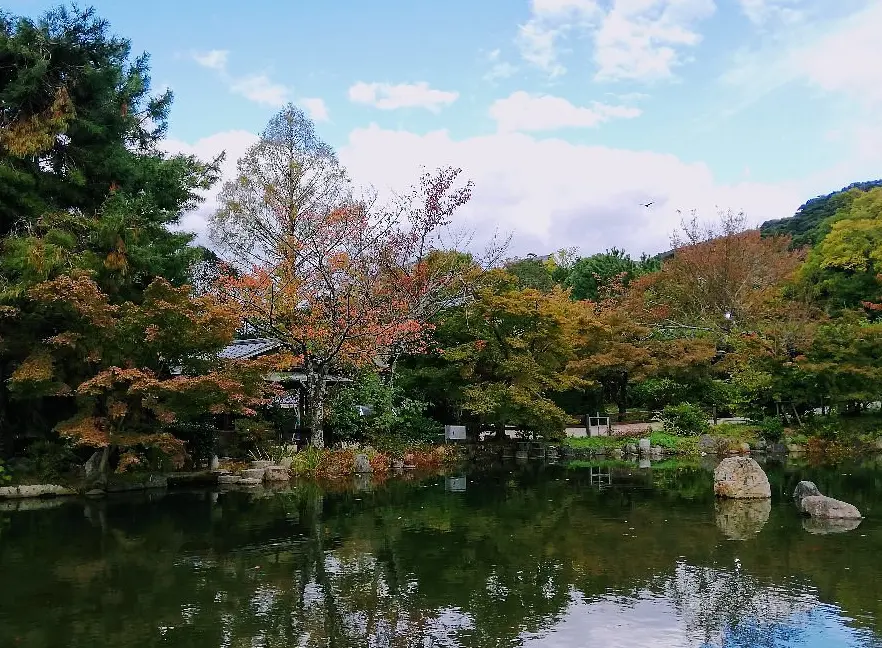
The park is open 24 hours with free admission, and illumination runs from 6:00pm-10:00pm during cherry blossom season (late March-early April). The central weeping cherry tree, known as “Gion no Yozakura,” is particularly spectacular when lit up. During peak season, food vendors set up shop and you’ll find people picnicking well into the evening.
Beyond cherry blossom season, the park remains a lovely evening destination with well-lit walking paths, peaceful ponds reflecting the night sky, and plenty of space to spread out a blanket. The park connects directly to Yasaka Shrine and Chion-in Temple, making it easy to combine with other nighttime temple visits. Access is simple: 10 minutes on foot from Keihan Gion-Shijo Station or take city bus #206 from Kyoto Station to the Gion stop.

15. Join a nighttime food and sake tour
The Kyoto Night Foodie Tour through Gion and Pontocho is honestly one of the best ways to experience local food culture without getting lost in translation. They take you to hidden spots that locals actually frequent, plus you get proper sake tastings with explanations about different brewing methods. I tried everything from A5 wagyu to traditional okonomiyaki, and the guides really know their stuff about Kyoto cuisine.
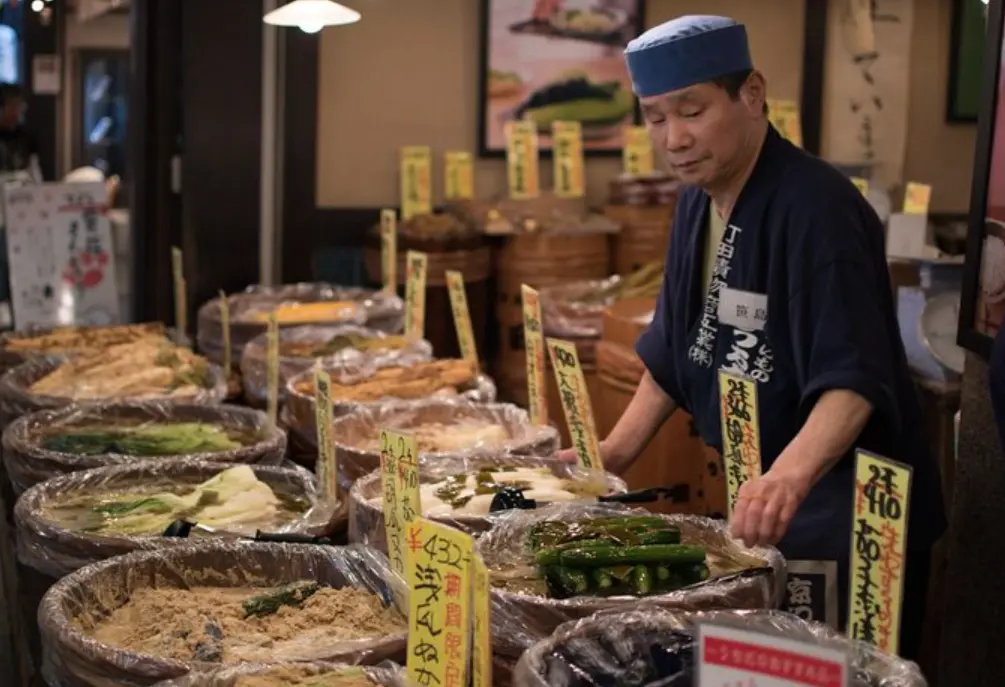
Magical Trip offers small-group tours that hit three different bars and restaurants in Pontocho Alley. You’ll try local specialties, learn about sake pairing, and possibly spot geisha heading to appointments in the lantern-lit alleys. Secret Food Tours focuses more on street food and casual spots, which gives you a different perspective on Kyoto‘s food scene.
Most tours cost ¥8,000-12,000 per person and include all food and drinks. They typically last 3-4 hours and accommodate dietary restrictions if you give advance notice. The group sizes are usually 6-8 people, so you actually get personalized attention from guides. I’d book these early in your trip so you can discover places to return to later. The tours also teach you how to order and navigate Kyoto‘s food scene on your own.

16. See Yasaka Shrine lit up at night
Yasaka Shrine at night captures the mystical side of Kyoto that most visitors never experience. The shrine’s stone lanterns create pools of warm light throughout the grounds, and I’ve found that evening visits feel far more spiritual than the busy daytime hours.
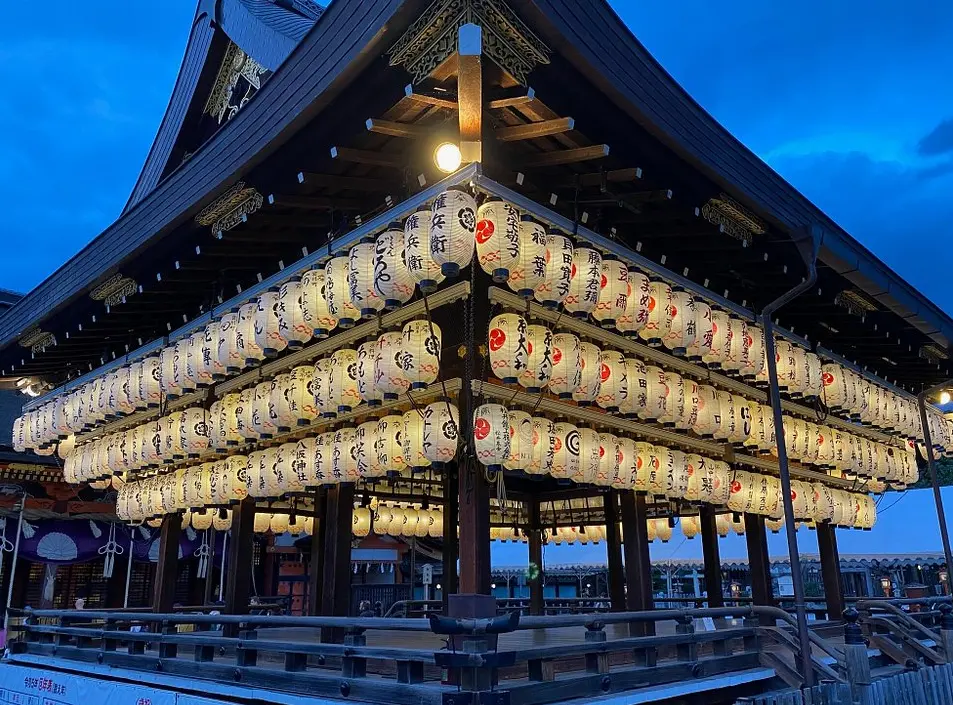
The shrine stays open 24 hours daily with no admission fee. The main buildings and pathways are beautifully illuminated after dark, creating perfect conditions for photography and quiet contemplation. This shrine connects to the famous Gion Matsuri festival and has deep historical significance in Kyoto’s cultural heritage.
The evening atmosphere allows you to properly experience the shrine’s sacred energy without tourist distractions. The illuminated grounds extend into the surrounding hillside, and you can walk up toward Kiyomizu-dera Temple via the traditional stone-paved streets. The shrine sits at the eastern end of Shijo Street, making it the perfect starting or ending point for a Gion district evening walk. The contrast between the lantern-lit shrine grounds and the neon-bright entertainment district just steps away perfectly captures Kyoto’s blend of traditional and modern.
- Read next: Best Places to Visit in June

17. Explore Kyoto’s jazz bars and live music venues
Jazz Spot Yama in Gion is this tiny, unassuming venue that’s hosted incredible musicians from around the world. The intimate atmosphere means you’re practically sitting on top of the performers, and honestly, that’s exactly what makes it special. I’ve seen everything from traditional jazz trios to experimental fusion acts, and the acoustics in this small space are perfect.
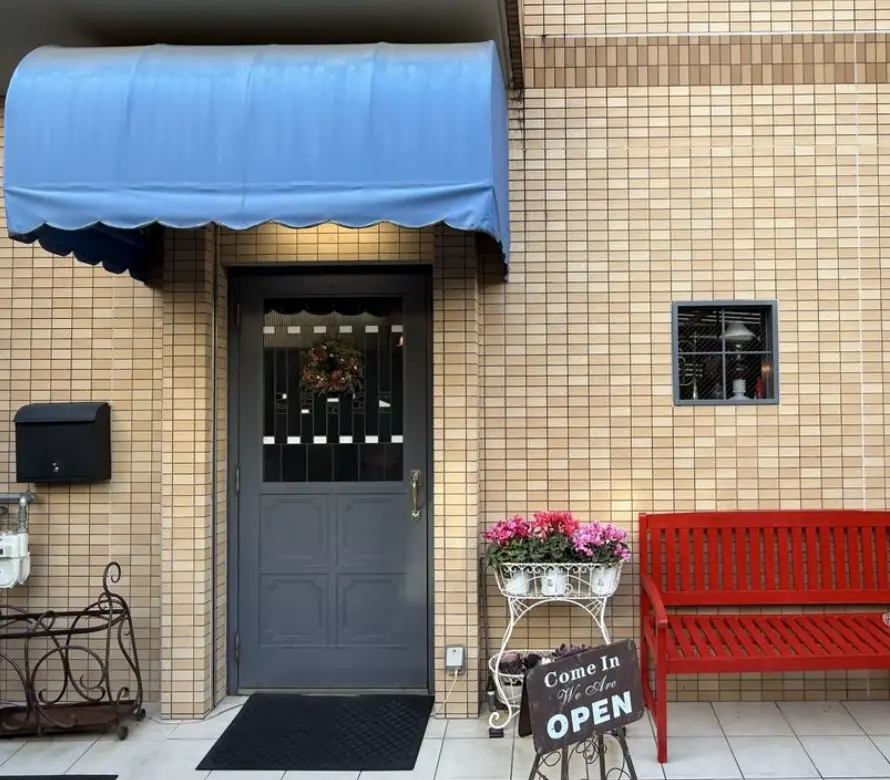
Club Metro has a rotating schedule of live music concerts, alternative performances, and themed nights that change monthly. The calendar varies wildly, so you might catch anything from techno to 80s tribute nights.
Cover charges for jazz venues run ¥2,000-3,000, and larger venues like Chambers can cost ¥2,000-5,000 depending on the act. Most jazz bars have two-drink minimums, but the quality is usually excellent. Club Metro tickets can be purchased online in advance, though the website’s in Japanese. I always check their social media for schedules since the programming changes frequently. Shows typically start around 8pm, and jazz venues tend to have a more sophisticated crowd than the dance clubs.
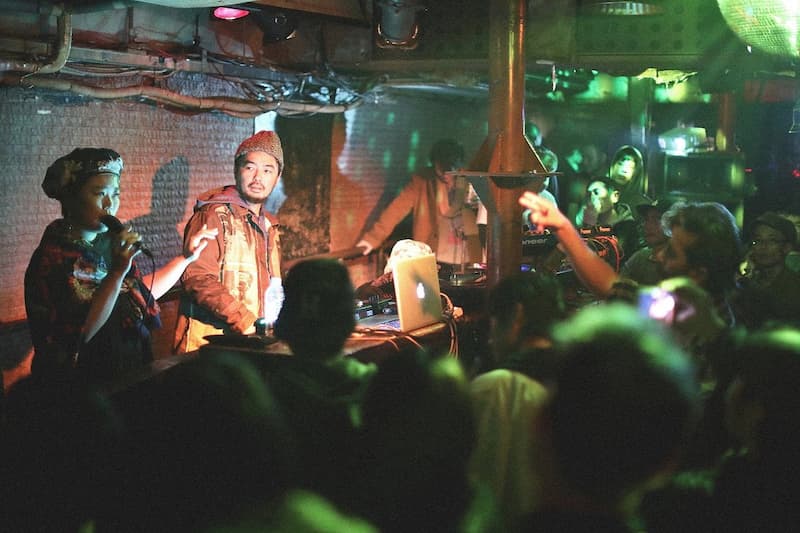
18. Climb to Kiyomizu-dera Temple after dark
Kiyomizu-dera‘s famous wooden stage offers one of Kyoto’s most breathtaking nighttime views, with the entire city sprawling out below in a carpet of twinkling lights. The 31-meter climb to the main hall feels like a pilgrimage, especially when you have the place mostly to yourself.
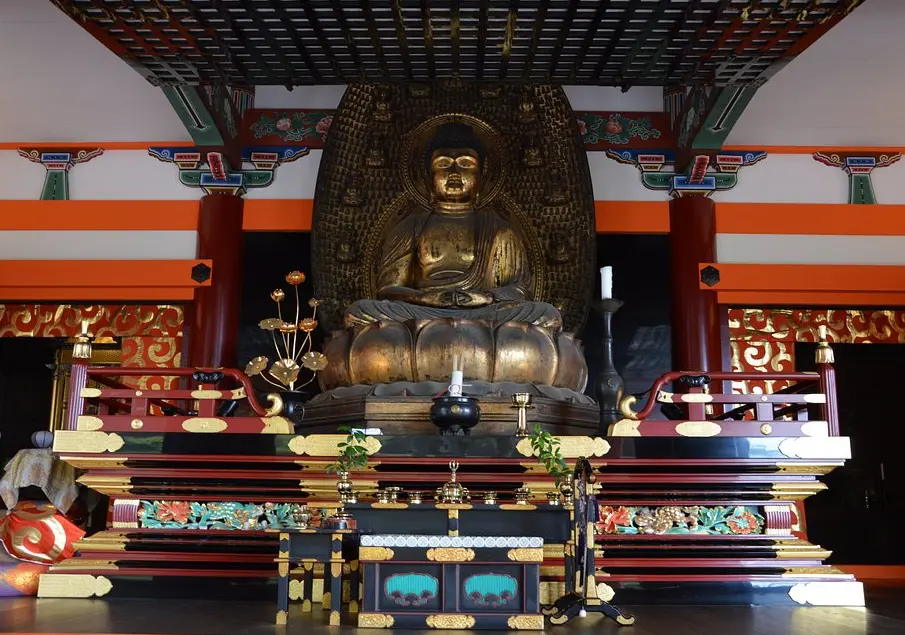
Special night viewing runs March 25-April 3, 2025 (spring), August 14-16 (summer), and during autumn season from 6:00pm-9:30pm with last entry at 9:00pm. Admission costs ¥500 for adults and ¥200 for elementary/junior high students. The temple emits a blue beam of light representing Kannon’s compassion that’s visible across the city at night.
The evening illumination highlights both the temple’s architecture and the surrounding cherry trees or autumn foliage, depending on season. From the wooden platform, you get unobstructed views over Kyoto’s rooftops toward the mountains. I recommend allowing 45 minutes for the full experience, including the walk up through Higashiyama’s traditional streets. The approach through Sannenzaka and Ninenzaka stone-paved streets is particularly atmospheric at night, lined with traditional shops and restaurants that stay open late.

19. Sample street food at Nishiki Market
Nishiki Market takes on a completely different energy in the evening hours when the tourist crowds thin out and you can actually taste your way through Kyoto’s most famous food street without getting trampled. I discovered the market’s evening magic during my third visit when I stayed past 6pm and found a completely different experience.
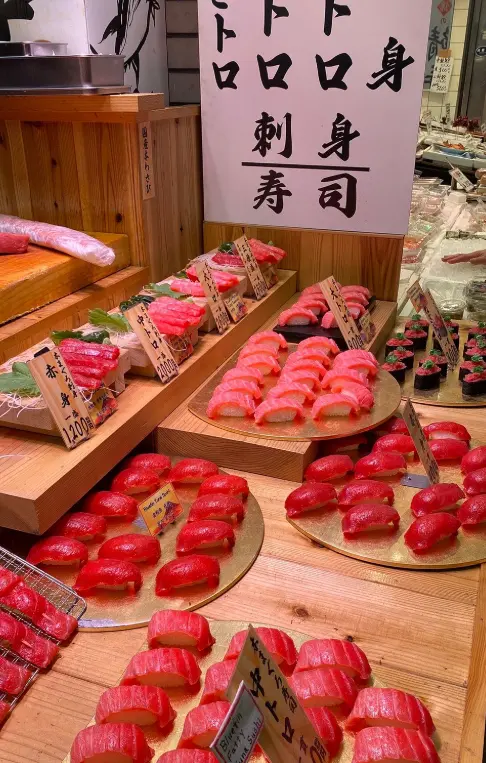
Most shops close by 6pm, but some vendors and restaurants stay open until 8-10pm. The best times to visit are right at 10am when it opens or around 5pm when crowds are lighter. The market runs for 400 meters with over 100 shops specializing in local Kyoto ingredients, street food, and traditional crafts.
Evening visits let you focus on the food without fighting crowds for every sample. Must-try items include fresh sashimi, wagyu beef skewers, matcha sweets, soy milk doughnuts, and Kyoto’s famous pickles (tsukemono). The key rule: eat where you buy and return your trash to the same stall. Look for Aritsugu (400+ year old knife shop), Kidoairaku ceramics, and Ichihara Heibei Shōten for personalized chopsticks. Access is 3 minutes from Shijo Station on the Karasuma subway line.

20. Watch samurai performances at Kembu Theater
The Samurai Kembu Theater offers an authentic glimpse into Japan’s warrior culture through traditional sword performances that combine martial arts, poetry, and dramatic storytelling. I was skeptical at first, but watching these skilled performers wield actual katanas while reciting classical poetry completely won me over.
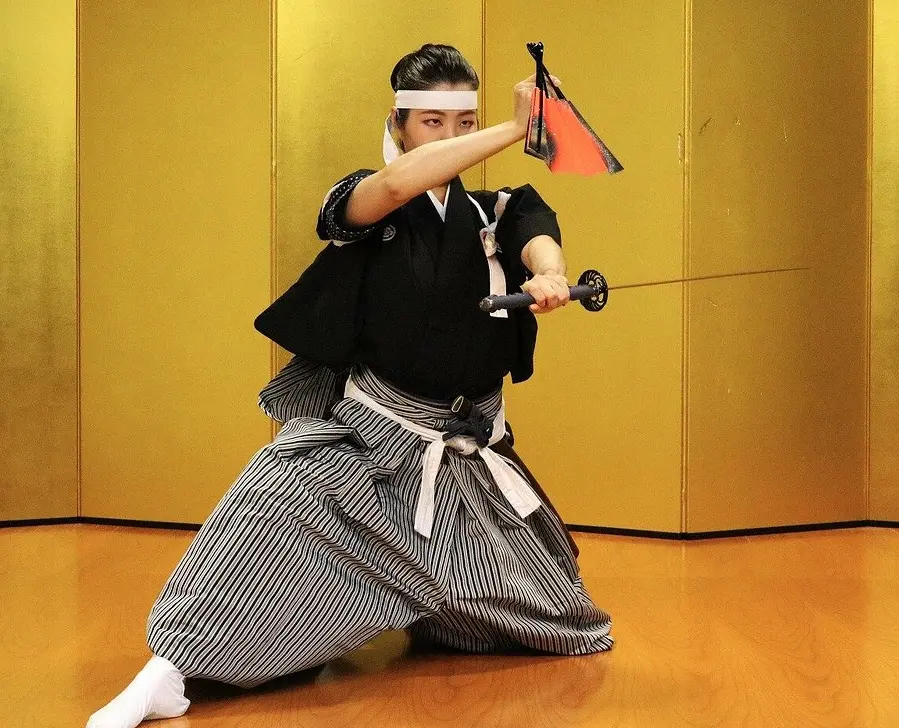
The theater offers regular evening performances featuring authentic samurai attire and katana demonstrations, plus mini-workshops where visitors can learn basic Kembu techniques. Shows typically run in the evening hours and include English explanations of the historical context and techniques being demonstrated.
The performances aren’t just sword-swinging spectacle – they’re deeply rooted in Japanese history and philosophy, exploring the values and stories of legendary warriors. The interactive workshop portion lets you try basic movements with wooden swords under expert guidance. It’s an intimate venue, so advance booking is recommended, especially during peak tourist seasons. The theater provides a unique cultural experience that goes beyond typical tourist activities, offering insight into the spiritual and artistic aspects of samurai culture that most people never encounter.

21. Hike Fushimi Inari Shrine in the evening
Climbing through Fushimi Inari‘s thousands of vermillion torii gates as the sun sets creates one of the most mystical experiences in Kyoto. Without the Instagram hordes, the mountain paths feel sacred again, and I’ve had some of my most peaceful moments in Kyoto hiking these trails after dark.
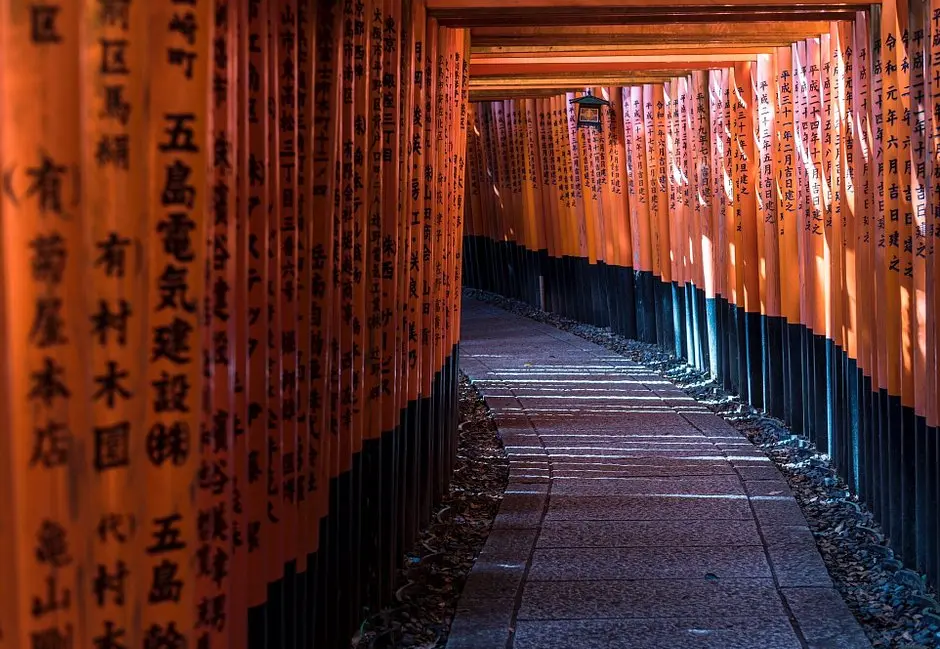
The shrine is open 24 hours daily with no admission fee, and the gates are softly illuminated throughout the night. The evening hike offers stunning views of Kyoto’s city lights from various lookout points along the mountain trail. The full hike to the summit takes 2-3 hours, but you can turn back at any point.
Evening visits let you experience the spiritual atmosphere without battling crowds for photos at every turn. The illuminated torii gates create an almost hypnotic tunnel effect as you climb higher up the mountainside. Bring a flashlight for the darker sections, especially if you plan to hike beyond the main shrine buildings. The combination of physical exercise, spiritual atmosphere, and spectacular night views makes this one of Kyoto’s most rewarding evening activities. Start before 7pm if you want to catch sunset views from the higher elevations.
- Read next: Top Experiences in Kansai Region

22. Bar hop through Pontocho Alley
Pontocho Alley is where Kyoto’s nightlife gets serious – this narrow lane packed with traditional izakayas, modern bars, and upscale restaurants offers everything from ¥300 drinks to elaborate kaiseki dinners. I’ve spent more evenings than I can count discovering hidden gems tucked into this atmospheric alleyway.
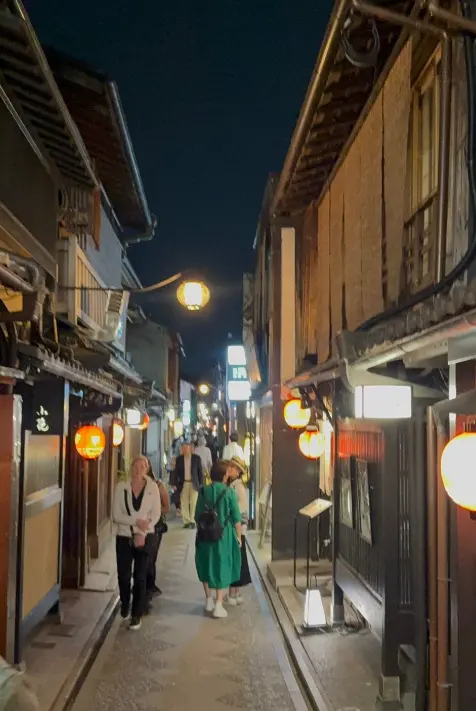
The alley runs parallel to the Kamo River and features many restaurants with noryo yuka (riverside terraces) during summer months from May-September. You might spot geisha and maiko heading to appointments as you explore the lantern-lit passages. Most establishments open around 5pm and stay busy until well past midnight.
The beauty of Pontocho is its variety – you can grab a casual beer and yakitori for under ¥2,000 or splurge on a multi-course riverside dinner for ¥10,000+. Look for establishments like B Store 1st (housed in a 100-year-old machiya) that blend traditional architecture with modern cuisine. The alley’s intimate scale means every doorway might lead to your new favorite bar. Start at the southern end near Gion-Shijo Station and work your way north. Or, begin with riverside dining and then explore the smaller bars tucked into the building’s upper floors.
- Read Next: 12 Most Beautiful Places in Japan






